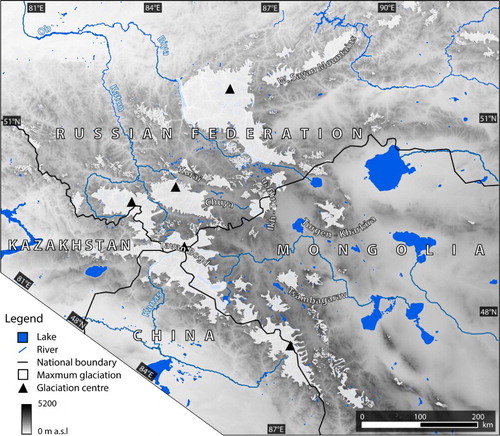Figures & data
Figure 1. Location of the mapped area and previously published glacial geomorphological maps from Central Asia and the Tibetan Plateau. (A) Altai and Western Sayan Mountains (; this study). (B) Tian Shan (CitationStroeven et al., 2013), (C) Tangula Shan (CitationMorén et al., 2011), (D) Bayan Har Shan (CitationHeyman et al., 2008), and (E) Shaluli Shan (CitationFu et al., 2012).
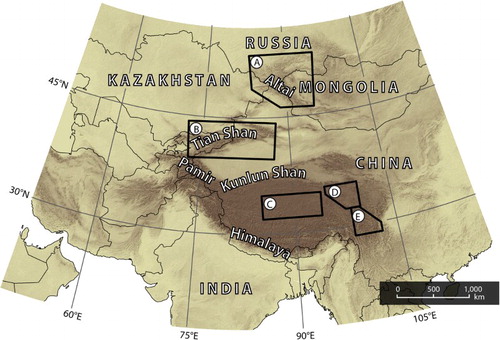
Figure 2. Physiography and administrative borders of the Altai region. The locations of previous studies of paleoglaciology and glacial geomorphology are shown: (1) CitationRudoy (2002), (2) CitationLehmkuhl et al. (2004), (3) CitationHerget (2005), (4) CitationReuther et al. (2006), (5) CitationXu et al. (2009), (6) CitationXu (2010), and (7) CitationZhao et al. (2013). Red boxes with numbers denote the locations of –. The background topographic data consist of the Aster Global Digital Elevation Model (AGDEM). Contemporary glacier extent is from the Randolph Glacier Index (RGI) (CitationArendt et al., 2012).
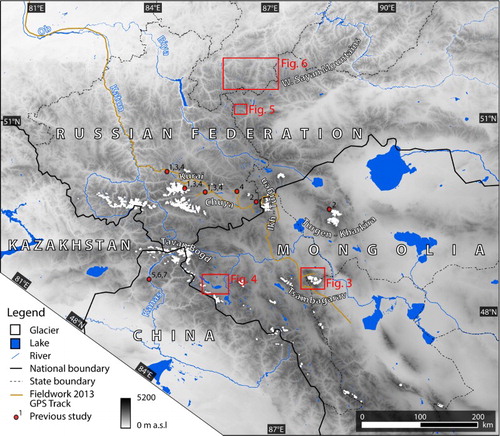
Figure 3. The Tsambagarav Massif (See for location). (a) Mapped landforms and a gray-scale AGDEM (b) False IR Landsat 7 ETM+ image, (c) coloured AGDEM draped by a semi-transparent gray-scale slope model, and (d) coloured AGDEM draped by a semi-transparent gray-scale hillshade model and with the maximum paleo-glacier reconstruction from the landform record (panel a) superimposed. Roman numbers indicate examples of (i) freshly exposed latero-frontal moraine and medial supra glacial moraine, (ii) marginal moraine, (iii) large degraded marginal moraine, and (iv) large lateral moraine.
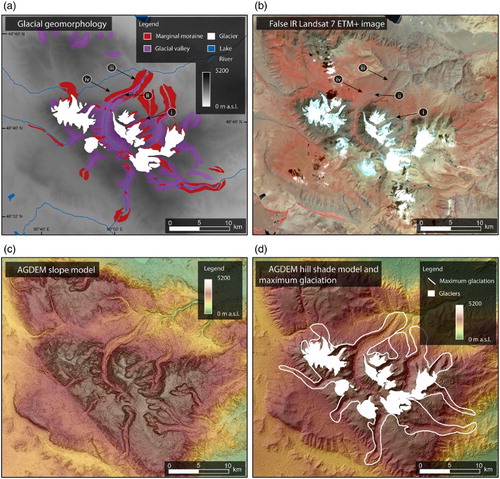
Figure 4. The Tavan Bogd marginal moraine complex (see for location). (a) Mapped landforms. (b) False IR Landsat 7 ETM+ image.
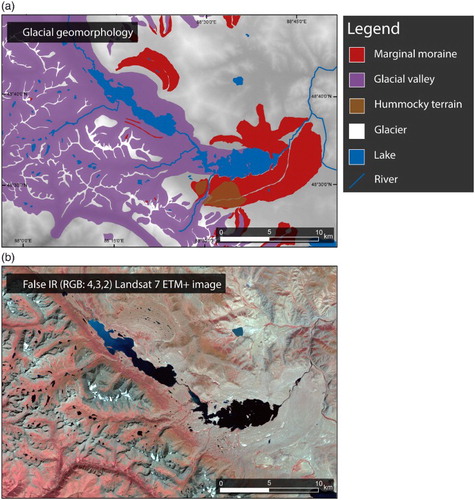
Figure 5. Glacial lineations in the northern Russian Altai (see for location). (a) Mapped landforms. (b) False IR Landsat 7 ETM+ image.
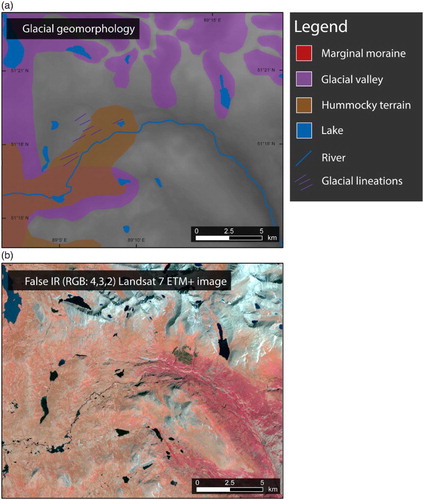
Figure 6. Interaction between glacial and fluvial processes in the Western Sayan Mountains (see for location). Colured AGDEM draped by a semi-transparent gray-scale slope model with a dashed white line showing the longitudinal elevation profile (b) and non-dashed lines showing location of cross-valley profiles in (c) and (d). Profiles A, B, C, and D show a smoother U-shaped glacial imprint while profiles E, F, G, and H show a clear V-shaped fluvial imprint in their cross-valley section.
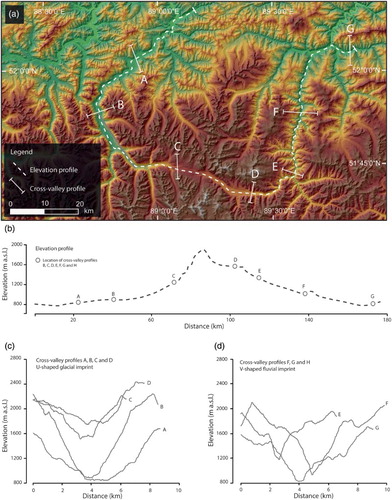
Figure 7. Minimum extent of maximum glaciation and inferred glaciation centres in the Altai and Western Sayan Mountains.
